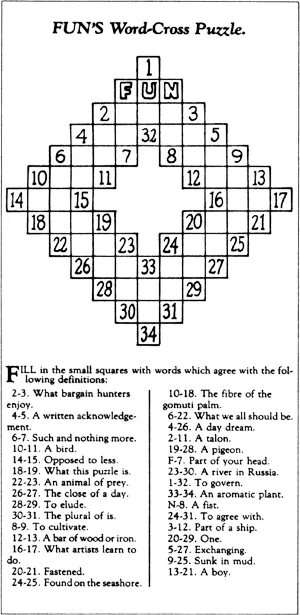Why Crossword Puzzles Are Still Mostly Written By Humans
Computers can write sports articles, replace stock brokers and help diagnose patients. But they can’t write good crosswords
/https://tf-cmsv2-smithsonianmag-media.s3.amazonaws.com/filer/c0/e7/c0e7183a-f585-4b95-96d5-2ae211f0c6a3/istock-480097549.jpg)
Computers can do a lot of things as well as people—write sports articles, replace stock brokers, even win the famously complicated game of Go. But there's one area where humans don't have to worry just yet: computers can't write a good crossword.
Machines do play a role in modern crossword design, helping to fill the grids with words, wrote cruciverbalist (crossword writer) Matt Gaffney in a 2006 Slate article that went in-depth on the question of whether computers or humans write better puzzles. But they can’t write puzzles that make sense to people without human aid, he wrote then. It’s still true today.
Crossword puzzles date back to this day in 1913, writes Matthew Shaer for the Christian Science Monitor. At that time, journalist Arthur Wynne published the first crossword puzzle in the now-defunct New York World. Wynne’s innovation would go on to be a newspaper staple—although the first crossword was arranged in a diamond, not a square, and was called a “word-cross.” Although Wynne was clearly a knowledgeable person, given the difficulty of that first crossword, he couldn’t have anticipated how crossword-crazy the world would become.

Wynne constructed his crosswords by hand, as did other early crossword constructors. But for decades, constructors have used computers to help come up with a crossword's fill—that is, the words that surround the theme words. But like anything that’s as cultural and requires as much knowledge as a crossword, there are trends in crossword design, and the time of the computer is coming to an end for some.
Given the scientific-looking layout of the puzzles, it makes sense that early computer programmers tried to get their machines to do the work of writing crosswords. Alas, “early efforts in computer-aided crossword design spat out marginal little grids filled with obscure words,” Gaffney wrote. Crossword puzzles are infamous for featuring ridiculously unknown words, referred to as “crosswordese”: INEE, NENE, ANOA, ATTU are just a few examples. In the late 1980s, though, Boston computer programmer Eric Albert had an idea, he wrote:
A computer could generate high-quality crossword puzzles if each entry in its word database were ranked on, say, a scale from one to 10. An excellent puzzle word like JUKEBOX (gotta love all those high-scoring Scrabble letters) might be worth a nine or 10, while a hacky obscurity like UNAU (a type of sloth that has appeared in crosswords more times than it’s been spotted in real life) would be a one or a two. By ranking the words, the junk would be left out and just the good stuff would go in.
That’s still how crossword puzzle constructors who use computer databases do it today, he wrote, arranging theme words (these longer, often pun-filled answers are still beyond a computer's skill level) and the black squares in a grid and then working with the computer to fill in the remaining blank space with other words. You still end up with esoteric words, but at least the puzzle makes sense, unlike the all-computer-created versions. And crossword aficionadoes understand that crosswords don't work without fill.
Famous cruciverbalists like Frank Longo are legendary for having huge databases of potential crossword additions. Longo’s has some nine hundred thousand words and phrases, wrote Michael Schulman for The New Yorker in 2010. When Gaffney wrote his piece in 2006, he was one of the few writers who still wrote crosswords without the help of a database.
In 2016, he’s still at it, writes Oliver Roeder for FiveThirtyEight. But now, Gaffney is part of a movement of indie crossword puzzle makers who describe themselves as being like indie brewers. “The [New York] Times is a Budweiser lager; the indies are small-batch saisons and IPAs,” Roeder writes. But, Gaffney told the reporter, The New York Times and other legacy puzzles will likely be part of the industry for some time to come. “I don’t see one putting the other out of business,” he said.